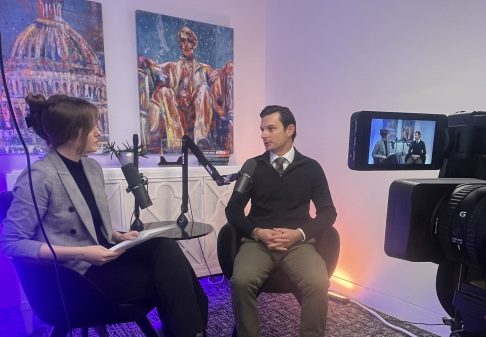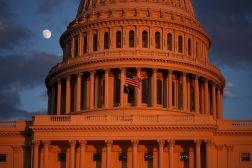
The federal government is in the process of considering the best plan to balance upgraded and modernized IT with the management of old-but-necessary systems, U.S. CIO Tony Scott said Tuesday.
Called bimodal IT, it’s a world that most CIOs already find themselves in, Scott said during his keynote at VMware’s Public Sector Innovation Summit, produced by FedScoop. Gartner first coined the phrase, defining it as “the practice of managing two separate, coherent modes of IT delivery, one focused on stability and the other on agility. ”
CIOs want “to do innovative things and the right things — leverage cloud, virtualization and so on — on the one hand, but you always have this set of things that are the old stuff, the legacy stuff … the bread and butter stuff that runs your agency,” he said. “And you have to have some way of managing the old stack and the new stack.”
Scott hinted that his office is working in that direction to help guide agencies to be more effective with the bimodal operation of IT — though he wasn’t “ready to announce any big program in the front.”
“We’re working through what that’s going to look like, what governance should take place, and the skill sets that are required, not only in the IT organization, but also in the agency [on the program side] to make sure that that’s a productive and useful and as-rapid-as-possible transformation,” he said.
“Our mind is very much focused on how do we bring out the best of modern technology, modern platforms, to the federal government and do it in a much faster way than would take place ordinarily,” Scott added. “It’s time to say goodbye to the ‘Wait ‘til it breaks’ mentality, or wait until a crisis … and get to a continuous upgrade, continuous refresh kind of motion.”
A kick-start to that kind of change would be provided by the administration’s proposed $3.1 billion IT Modernization Fund, currently authorized in a bill sponsored by House Minority Whip Steny Hoyer, D-Md. That cyclical, “evergreen,” one-time fund — because agencies would have to repay investments out of the savings that result — could mean around $15 billion in IT modernization funding over five years for agency systems that need it the most.
While bolstering cybersecurity is the obvious imperative for such an initiative, Scott said, modernizing systems also means more efficiency in dollars spent — “it’s just economically better.” For every dollar invested in the past in legacy technology, it’s going to cost 15 cents per year for future maintenance of that system, he said, as a rule of thumb.
“That’s a bad thing,” Scott said, especially when some agencies have IT that is decades old. “It begins to help you appreciate how inefficient we are in terms of the money we’re putting out.”
Yet there’s an opportunity in that inefficiency, he said.
“There’s a great opportunity for us … to get on this refresh and upgrade [plan], and make your tax dollars go further and put them to more productive use.”






